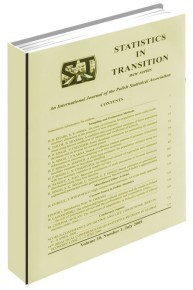On the choice of the number of Monte Carlo iterations and bootstrap replicates in Empirical Best Prediction
On the choice of the number of Monte Carlo iterations and bootstrap replicates in Empirical Best Prediction
Author(s): Adam Chwila, Tomasz ŻądłoSubject(s): Business Economy / Management
Published by: Główny Urząd Statystyczny
Keywords: survey sampling; economic longitudinal data; prediction for future periods
Summary/Abstract: Empirical Best Predictors (EBPs) are widely used for small area estimation purposes. In the case of longitudinal surveys, this class of predictors can be used to predict any given population or subpopulation characteristic for any time period, including future periods. Generally, the value of an EBP is computed by means of Monte Carlo algorithms, while its MSE is usually estimated using the parametric bootstrap method. Model-based simulation studies of the properties of the predictors require numerous repetitions of the random generation of population data. This leads to a question about the dependence between the number of iterations in all the procedures and the stability of the results. The aim of the paper is to show this dependence and to propose methods of choosing the appropriate number of iterations in practice, using a set of real economic longitudinal data available at the United States Census Bureau website.
Journal: Statistics in Transition. New Series
- Issue Year: 21/2020
- Issue No: 2
- Page Range: 35-60
- Page Count: 26
- Language: English

